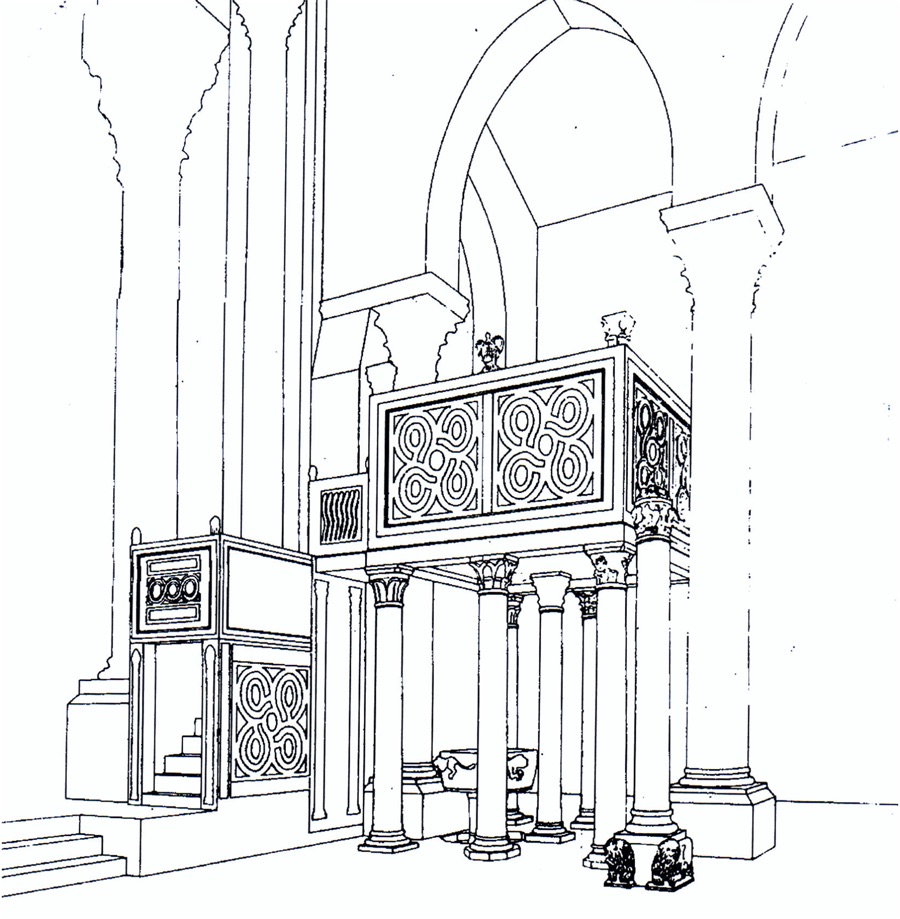The ambo is one of the focal points of the Eucharistic celebration, since it is in this sacred place that the word of God is proclaimed. This is why it is placed on the south side of the nave, where the sun reaches its maximum brightness. The word proclaimed has the power to overcome darkness and death. In Norman churches, the ambo, the Paschal candle and the baptismal font formed a single monument dedicated to the Resurrection. In particular, the font, which represented rebirth, took its place below the ambo, while the candle, which symbolised light, beside it took the form of the empty tomb.
The Cefalù Cathedral’s ambo dates back to the 12th century, at the time when work began on the new project, i.e. from 1145. Stylistically, it falls between the one in the Palatine Chapel and the one in Salerno Cathedral, dated 1160/70.
In 1587, during the episcopate of Francesco Gonzaga, the ambo was dismantled and some parts were reused inside the Cathedral, while others were even set aside. The plutei at the entrance to the presbytery were walled up, while others were reused in the ornamentation of the episcopal and royal seats. The eagle at the entrance to the Seminary was walled up and later identified as the dove of the Holy Spirit. The columns, with their respective capitals, were placed to support the chancels, with one to the north and one to the south, where the pipe organs were placed. At present, about two hundred of the ambo’s components have been surveyed, restored and studied and are located in the south aisle awaiting a possible and hoped-for reconfiguration. According to one reconstruction, the loggia rested on seven columns, like the House of Wisdom, with capitals decorated with plant elements such as palms and acanthus leaves and seven plutei decorated with mosaic and geometric motifs. The ambo was divided into three areas, the Psalms area, the Scriptures area and the Gospel area, where the marble eagle was placed, wings outstretched, acting as a lectern, in memory of the evangelist John.
